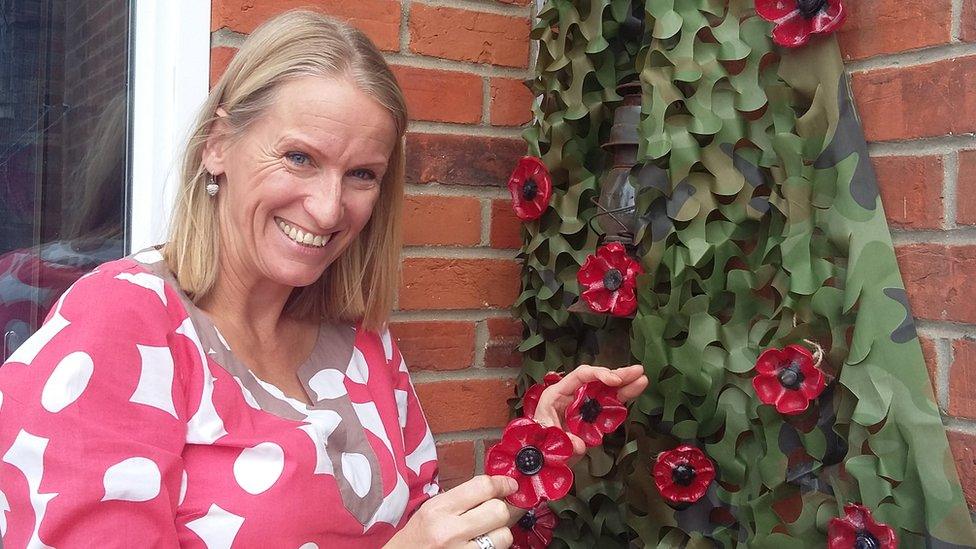Plastic Matter exhibition highlights plastic as 'valuable' material
- Published
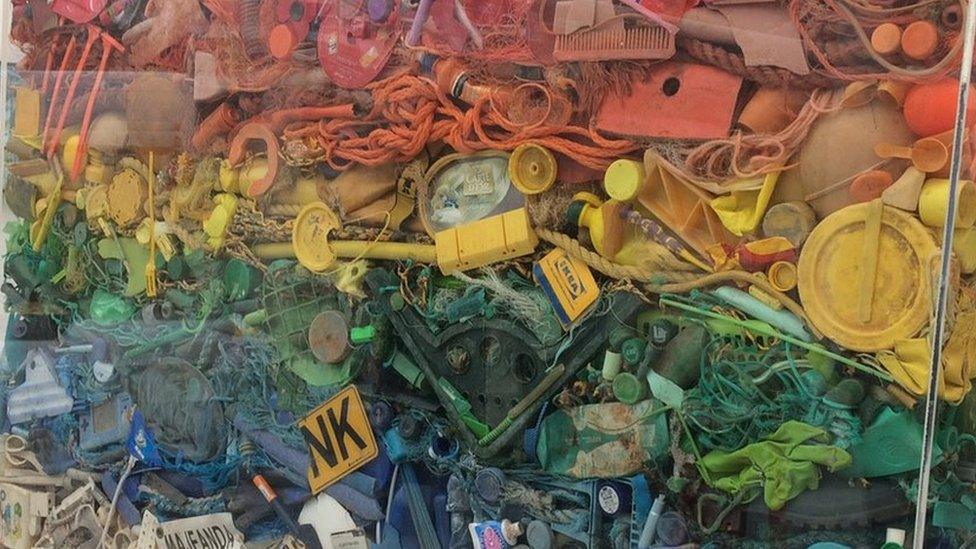
Maria Arceo's Neocide highlights the idea of strata and how plastic items will become part of Earth's rock formations
A new exhibition is looking at the environmental impact of plastic and how it can have new life as a "valuable" resource after it has been discarded.
The University of Hertfordshire's Plastic Matter includes a canopy of recycled bottles and a huge box of items found in the River Thames.
The curators hope the display will "provoke conversations and action".
One artist, Maria Arceo, said she wanted "to inspire people to change the way they look at plastic".
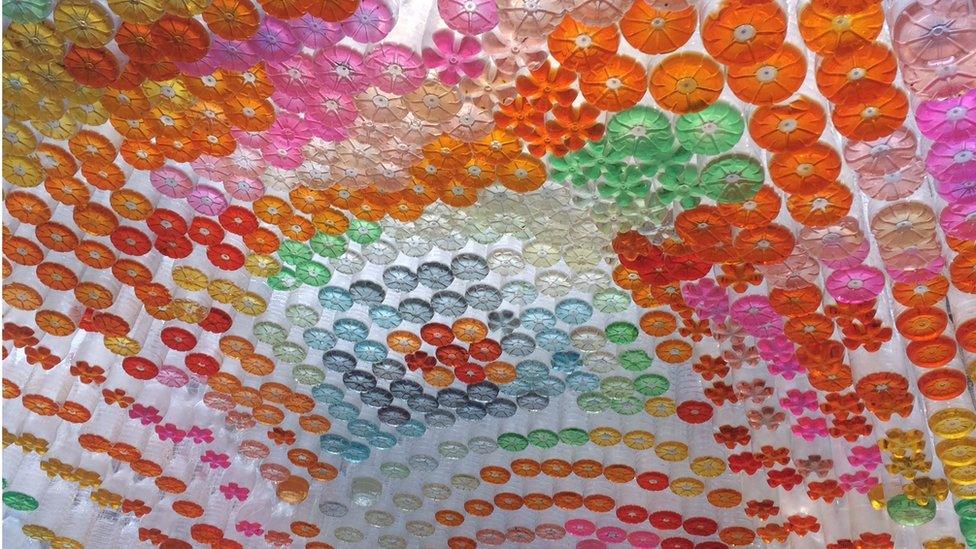
Seyi Adelekun's Plastic Pavilion uses 1,600 recycled bottles to raise awareness of the wasteful consumption of single-use plastic bottles
The exhibition, which runs at the Hatfield campus until April, displays installations, film and photography from eight artists, including the canopy of 1,600 plastic bottles filled with coloured water and a time lapse video of 9,273 plastic spoons and 3,091 rubber bands as they collapse and decay.
'Plastics' potential'
It looks at how quickly we use and dispose of this "problematic material", consider its polluting impact and how it can become "something more treasured", the university said.

Hilary Jack's Turquoise Bag in a Tree project shows how rubbish hangs in trees as a reminder of our consumer culture taking years to decay
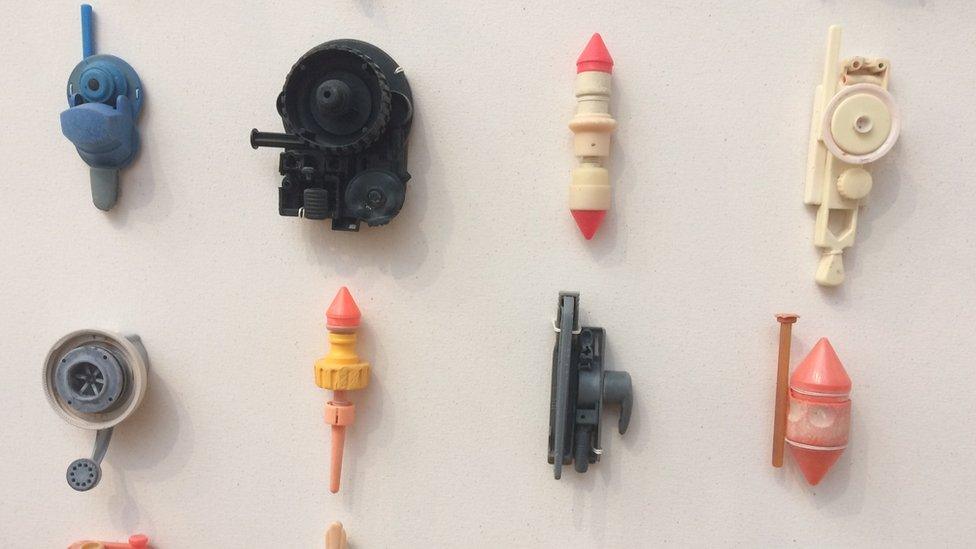
Steve McPherson has used objects found on his local coast in Kent for his art
Arceo's work, Neocide, features material collected from more than 40 beaches along the Thames displayed in layers.
She said that after being told 2,000-year-old leather shoes had been found in rivers she discovered plastic only breaks down when exposed to light or heat, so in deep water they will never degrade and then become part of future rock formations.
"In Neocide, I separated the plastic into colours to highlight the idea of [rock] strata and also I wanted to make it attractive, precious and to change people's idea of plastic as a cheap and disposable material," she said.
"By creating artworks... you can see it as a resource rather than just something you can dispose of."
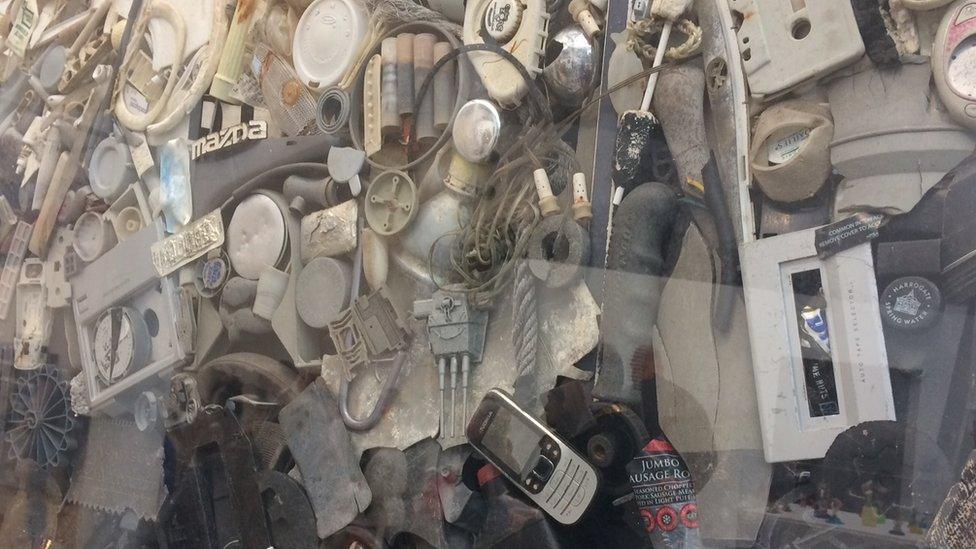
Maria Arceo's work, such as Chromophone, focuses on the large amount of plastic litter deposited into rivers

Find BBC News: East of England on Facebook, external, Instagram, external and Twitter, external. If you have a story suggestion email eastofenglandnews@bbc.co.uk, external
- Published21 April 2019
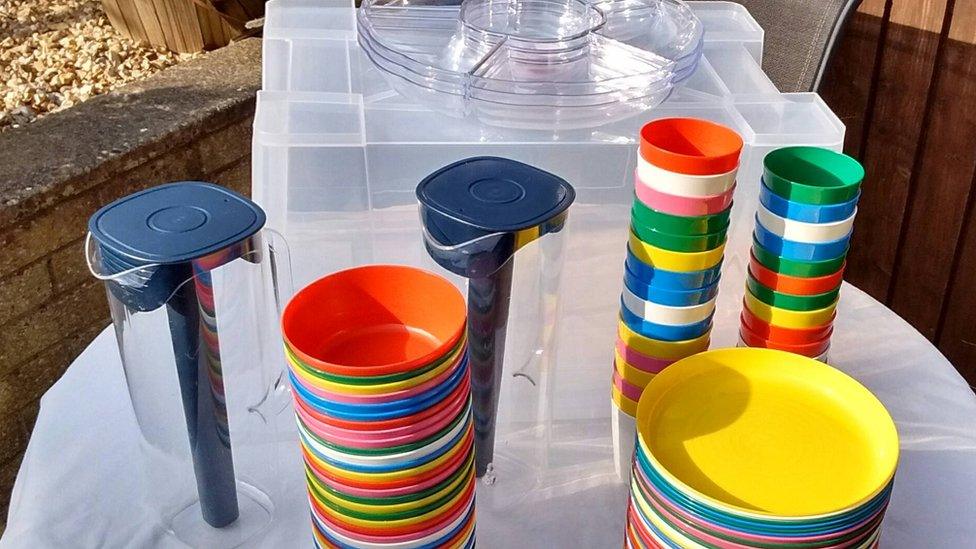
- Published25 May 2018
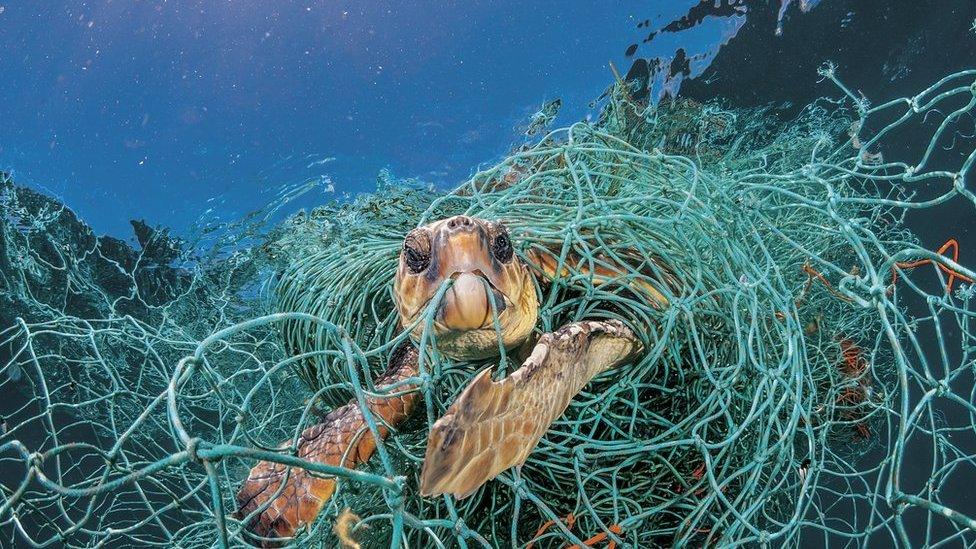
- Published28 October 2018
